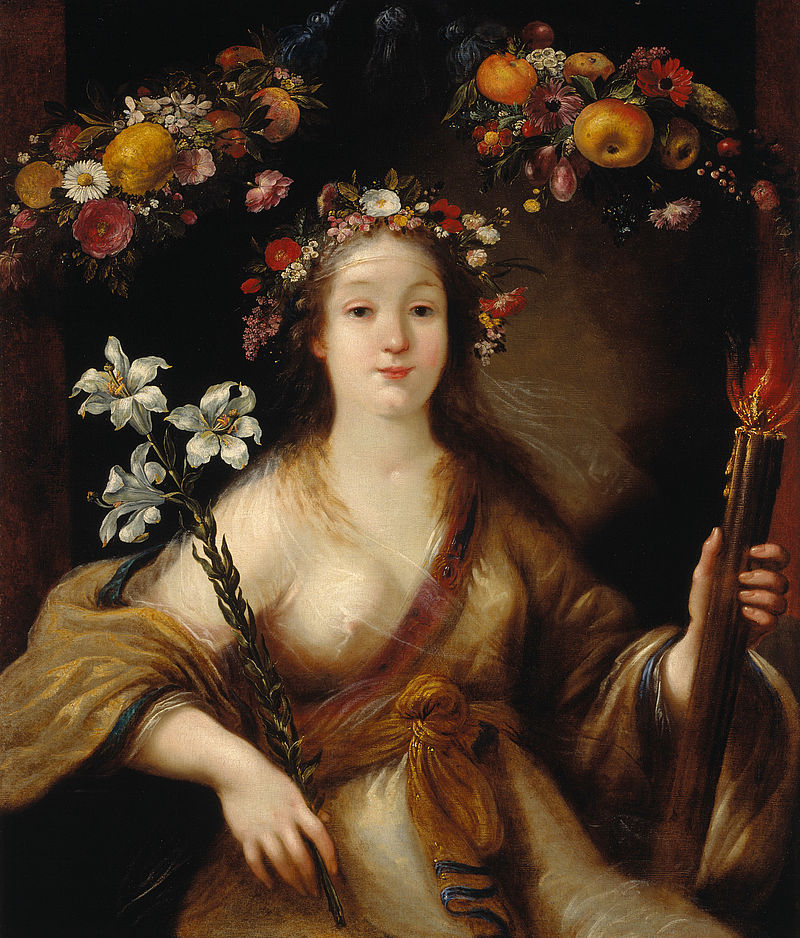Flora
Framesize 101.80 x 89.00 x 3.20 cm
As the personification of spring, Flora is the synonym of youth, joie de vivre, abundance, wealth and fertility. In ancient Rome, her annual festival, Floralia, was enthusiastically celebrated at the end of April and into May. The wide variety of occasionally licentious entertainment ranged from hare and goat baiting, through theatrical performances, to dancers shedding their clothes on stage ds of fruit and flowers with ripe fruits and glorious open blooms, and wearing a wreath of flowers, Flora, in her flawless youth, gazes straight at the viewer. Her quiet, understated elegance and noble bearing, and her dainty, courtly expression are far removed from realistic portraiture, but they were very much to the taste of the 17th century public. For the Greeks, the lily in her right hand was also a symbol of beauty and love, and the burning torch signified time, which combines becoming and passing.
The indeterminate background in gradations of earthy browns, lightened a little by a diffuse light effect to the right of the goddess’s face, reflects the timeless quality. Vignon’s colouristic skills are evident in the colour accentuations he applies in the wreath and the two garlands. The halflength representation, the distinctive light effect and the reduced palette are typical of the first decades of the artist’s career.
The painting originally had an oval setting, with Flora not at the centre, but placed a little to the left, which corresponded better to the dynamic conception of baroque art.
HABERSATTER Thomas: Vignon Claude, Flora in: DUCKE Astrid, HABERSATTER Thomas, OEHRING Erika: Masterworks. Residenzgalerie Salzburg. Salzburg 2015, p. 136


